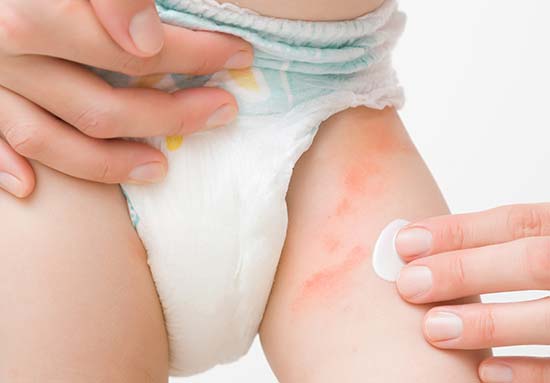Everything You Need to Know About Nappy Rash Pimples
Hey there, awesome parents! ? Are you dealing with the troublesome and oh-so-common issue of nappy rash pimples on your little one’s delicate skin? Fear not! We’re here to guide you through the ins and outs of nappy rash pimples, offering you the best tips for treatment and prevention.
What Are Nappy Rash Pimples?
Nappy rash pimples, or diaper dermatitis, can be a real pain in the bottom – literally! These small, red bumps on your baby’s bum aren’t just uncomfortable; they can be quite worrying for new parents. But with a pinch of knowledge and a dash of care, you can keep your baby’s skin happy and healthy.
Causes of Nappy Rash Pimples
Understanding the causes is your first step to preventing nappy rash pimples. Here are some common culprits:
- Moisture: A wet or infrequently changed diaper can create a moist environment where bacteria thrive.
- Irritation: Rubbing against the diaper or using scented wipes/diapers can irritate the sensitive skin.
- Infection: Sometimes, yeast or bacteria can take hold, leading to pimples or worse.
- New Foods: Introducing new foods to your baby can change the composition of their stool, which can irritate the skin.
- Sensitive Skin: Some babies just have more sensitive skin than others and are more prone to rashes.
Spotting the Difference
It’s important not to confuse nappy rash pimples with other conditions like heat rash or baby acne. Nappy rash pimples are typically localized within the nappy area and come with redness and irritation. Meanwhile, baby acne usually shows up on the face, and heat rash occurs in skin folds and on the back or neck.
Treating Nappy Rash Pimples
If your baby’s buns are looking a little bumpy, here’s how to smooth things out:
- Keep it Clean: Regularly change nappies and clean the area with mild, fragrance-free cleansers. Avoid vigorous scrubbing!
- Let it Breathe: Give your baby some diaper-free time every day to air out the skin.
- Barrier Creams: Apply a barrier cream or ointment to protect the skin from moisture.
Remember, every little peach is unique, so what works for one baby might not work for another. If nappy rash pimples persist despite your best efforts, it’s worth chatting with your pediatrician. They might recommend a medicated cream or have additional tips tailored to your baby’s needs.
When to See a Doctor
If those pesky pimples are getting worse or your baby has a fever, it’s time to get a professional opinion. Other signs to look out for are if the rash spreads beyond the nappy area, if it keeps returning, or if your baby seems in pain or distress.
Keep in mind, we’re covering just the tip of the iceberg. Stay tuned for more in-depth discussions on how to keep your baby’s skin in tip-top shape!

Five Essential Tips for Preparing for Nappy Rash Pimples
Proactiveness is key when it comes to nappy rash pimples. Here are five golden nuggets of wisdom for all you super-parents to prepare and protect your little one’s bum:
- Stock Up on Supplies: Have a stash of essentials ready, including plenty of absorbent diapers, gentle wipes, and fragrance-free cleansers. Protective barrier creams with zinc oxide can be a superhero for your baby’s skin, so keep them at arm’s reach.
- Diaper Duty Training: Reality check – frequent nappy changes are a must. Become a diaper-changing ninja to limit your baby’s skin’s exposure to wetness. Learn the cues and ensure the whole family knows the importance of timely diaper changes.
- Creating a Safe Space: Set up a comfortable, clean changing area in your home, complete with all necessities. This should be a calm space where you can also perform any recommended skin care routines without hustle or bustle.
- Laundry Checks: What touches your baby’s skin matters. Use hypoallergenic laundry detergent to wash nappies and clothing, reducing the risk of skin reactions. Fragrance-free, dye-free options are your friends.
- Monitor Diet Transitions: Keep an eye on how your baby’s skin reacts when introducing new foods. Patch testing new foods can help avoid potential triggers that might upset your baby’s skin as much as their tummy.
Remember, while these tips are helpful, they’re starting points. Each baby’s skin is as individual as their giggles, so tailor your approach to what suits them best.
Nourishing the Skin from the Outside
Beyond managing diaper duty, skin moisturisation can work wonders. Look for gentle, baby-friendly lotions and creams. Ingredients like coconut oil, calendula, and aloe vera can be soothing, but check for allergies and test products on a small skin area first.
Nourishing from the Inside
Hydration is essential—even for little ones! Ensure that your baby is getting enough fluids, especially if they’re transitioning to solid foods. Proper hydration can help their skin maintain its natural defenses against nappy rash pimples.
Keep an Eye on Fabric Choices
Opt for breathable fabrics when dressing your baby, like natural cotton or bamboo. These materials wick moisture away from the skin and prevent overheating, which could exacerbate rash issues.
Stay Informed and Up-to-Date
Last but not least, the world of baby care is always advancing. Stay up-to-date with guidelines from trusted health sources and be open to new products and methods that could enhance your baby’s skin care routine. A well-informed parent is an empowered parent!
By keeping these tips in your parenting toolkit, you’ll be well on your way to preventing and managing nappy rash pimples. Keep your heads up, your wipes handy, and remember that with a little knowledge and a lot of love, you’ve got this! ?
See more great Things to Do with Kids in New Zealand here. For more information see here
Disclaimer
The articles available via our website provide general information only and we strongly urge readers to exercise caution and conduct their own thorough research and fact-checking. The information presented should not be taken as absolute truth, and, to the maximum extent permitted by law, we will not be held liable for any inaccuracies or errors in the content. It is essential for individuals to independently verify and validate the information before making any decisions or taking any actions based on the articles.




